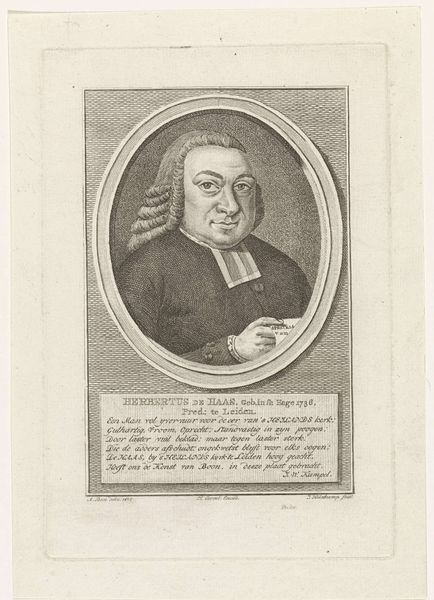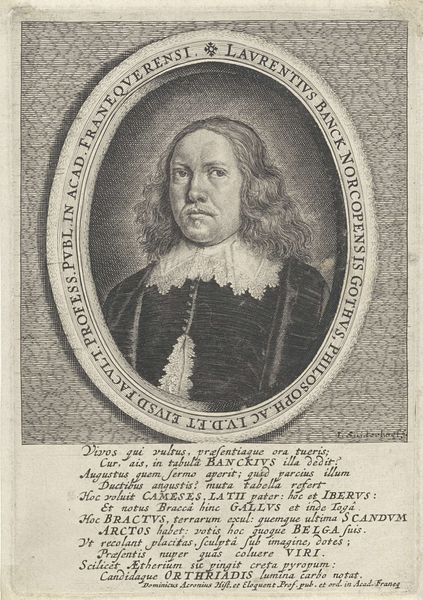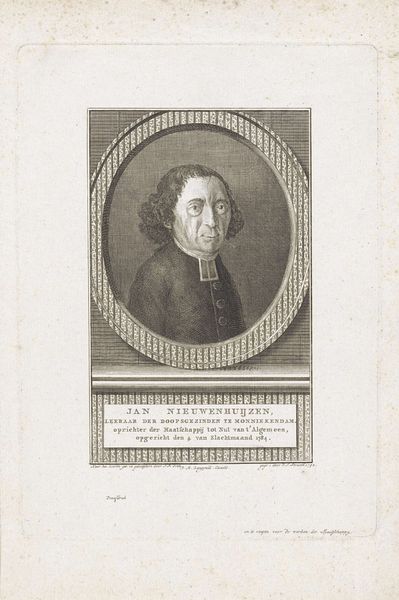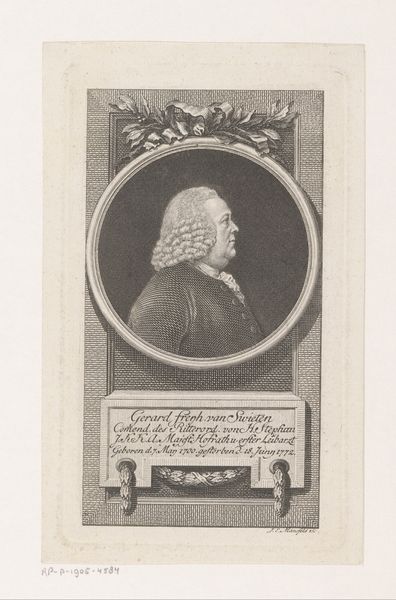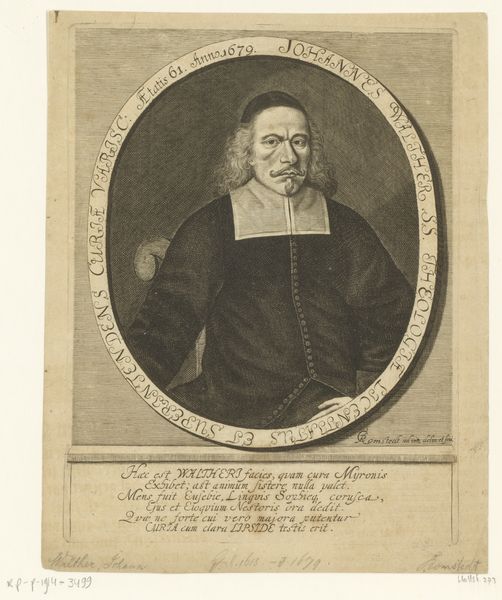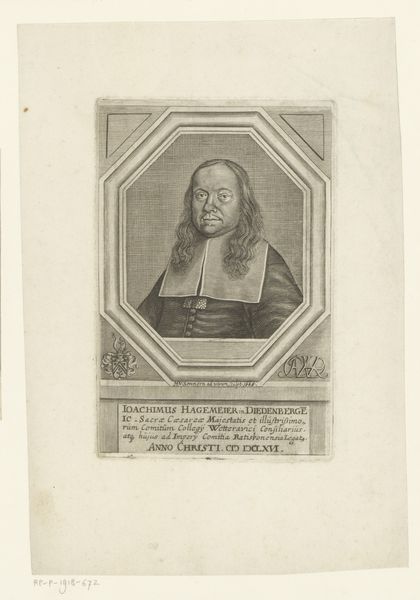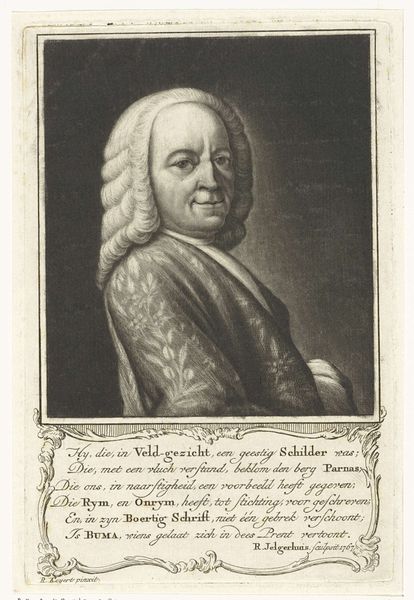
paper, engraving
#
portrait
#
neoclacissism
#
old engraving style
#
paper
#
portrait reference
#
history-painting
#
engraving
Dimensions: height 226 mm, width 177 mm
Copyright: Rijks Museum: Open Domain
Editor: Here we have a neoclassical engraving from 1800 entitled "Portret van Joh. Henry" by George Kockers, residing here at the Rijksmuseum. The meticulous lines give it such a somber, almost severe feel. What do you see in this piece? Curator: Immediately, I'm drawn to the deliberate use of the profile. In art, a profile often symbolizes a certain reserve, perhaps even detachment. What does it suggest to you, considering this was made during a time of great societal change? Editor: I guess it makes him seem distant. Is that why the artist chose that pose? Curator: Perhaps. And notice the elaborate wig. What does it say to you about Henry’s position or identity? Editor: Well, the wig definitely speaks of status. It suggests wealth, education, and likely belonging to a certain social circle. Almost theatrical. Curator: Exactly. The clothing reinforces the theme, don't you agree? It presents not just an individual, but also communicates authority. Do you think the artist wanted to memorialize this authority or question it? Editor: Good question! I hadn’t considered the questioning part. It feels reverential to me, the way the inscription highlights the subject. Curator: That inscription, indeed, speaks of Henry’s connection with the community, the “Middelburgsche Volk.” The symbols employed within the frame also hint at values esteemed in that community: order, virtue, perhaps even civic duty. Kockers certainly layers meaning within the conventional portrait format. Editor: I learned so much today about symbols from that time period, thanks. I'll be looking at portraits much differently moving forward. Curator: Indeed, this reminds us how art can reveal so much about what society values. And maybe, it encourages us to ask questions about what _we_ value today!
Comments
No comments
Be the first to comment and join the conversation on the ultimate creative platform.
